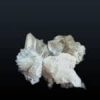Psychedelic or Hallucinogen Drug
Here is some LSD information. (lysergic acid diethylamide) It is a hallucinogen commonly referred to as “acid.” It comes as a powder in capsules, tablets, or miniature powder pellets called “microdots.”
Sometimes made by dissolving crystals into a liquid and sold in vials or applied to sugar cubes, blotters or gelatin squares called “window panes.” However, the most common form of it is in “blotters” or “blotter acid”- small squares of LSD-soaked blotting paper.
Each square contains one individual dose. Some have colourful illustrations or cartoon characters printed on them.
It comes from a fungus (ergotamine tartrate) that grows on rye and other grains. Pure LSD is a white, odourless, and slightly bitter crystalline powder. It is very potent- the size of a small pill, is enough for approximately 3,000 doses.
LSD Information, Street Names
Also Known As:
acid, backbreaker, blotter acid, blotters, boomers, cid, dot, dots, mellow yellow, barrels, California sunshine, cube, domes, flats, frogs, lids, wedges, microdot, purple haze, hits, sid, tabs, trips, windowpane, yellow sunshine.
Category:
Hallucinogens
LSD Information & Perceptions
Generally, people take it by holding it on the tongue or swallowing. There have been a few reports of people inhaling or injecting it. The absorption from the gastrointestinal tract occurs rapidly. The drug diffuses into all tissues of the body including the brain. The effects are felt gradually within 30-60 minutes after ingestion, and peaks within 2 to 4 hours, and gradually diminishes within 10-12 hours. The first 4 hours are often referred to as a “trip”.
The way that LSD alters perceptions in the brain was unclear for many years. Researcher at Yale found new data that indicates a reduction in connections between regions of the brain. The reduction takes place in areas of the brain producing cognitive processes. It also increases connectivity in brain networks associated with sensory functions. It stimulates a particular receptor for the neurotransmitter serotonin
The Effects of LSD
The effects of LSD on a person are unpredictable. It is different for everyone. The way a person feels after taking it depends on many factors:
- age, body weight, and sex
- mood, expectations, and environment
- the amount consumed
- whether a person has eaten recently
- the amount of food in a person’s stomach
- how often and long it has been used
- medical or psychiatric conditions
- use of other drugs, including non-prescription, prescription, or street drugs
Short-Term Effects
LSD produces vivid visual effects. These visual effects are referred to as “pseudo-hallucinations” because users are aware that they are not real. True hallucinations are visions that are perceived as real. Hallucinations rarely occur, and can be frightening. The occurrence of hallucinations appears to be dose-related.
Previous positive experiences with the drug do not guarantee subsequent positive “trips”. “Bad trips” are not predictable and are not related to dose, but often associated with a person’s predisposition, setting, and circumstances.
Other psychoactive effects may include:
- extreme mood swings from joy, desperation, depression, anxiety, terror, aggression
- altered sense of gravity (body feels light or heavy)
- difficulty concentrating
- impaired judgment (distance, time, speed)
- impaired short-term memory
- recent or long-forgotten memories may blend in with the present
Physical effects of LSD may include:
- numbness
- increased blood pressure | heart rate
- dizziness
- dilated pupils
- loss of appetite
- dry mouth
- chills
- nausea
- tremors
- decreased coordination
- weakness
No deaths have exclusively resulted from an overdose of LSD. Accidental fatalities have been reported resulting from perceptual distortions leading to accidental death (e.g. believing one can fly or can walk through traffic).
Long-Term Effects of LSD
Long-term effects can include:
- psychosis
- depression
- paranoid state
- flashbacks
A “flashback” is the spontaneous and unpredictable re-occurrence of visual distortions or emotional experiences during a previous episode of the drug’s use. Only some people experience flashbacks. Flashbacks do not appear to be related to the dose of taken previously and can develop after one single use of of it.
Long-lasting psychosis can develop and persist after its use has stopped. It is similar to paranoid schizophrenia. Characterized by hallucinations, delusional thinking, and bizarre behavior. This has been reported after single-use and in regular users. Psychosis may last for years and can affect people without a history or symptoms of psychological disorder.
While these effects can occur within a few months after LSD was taken and decrease over time, they may continue for years.
Is LSD Addictive?
LSD does not cause physical dependence. People who use it regularly do not experience physical withdrawal symptoms when they stop. However, it can be psychologically addictive. Some people repeat users can feel the need to consume it. And the drug can take on an exaggerated importance in their lives.
Tolerance to the drug’s effects occurs very rapidly. Often after repeated use for three or four days, no amount of the drug can produce the desired effect. Normal sensitivity to LSD generally returns if the drug is not used for 3 to 4 days.
List of Drugs
REVIEWS

Marc J. Bernard
Author,
Substance Use Disorder & Recovery Professional,
Referral & Consultation Counsellor




















